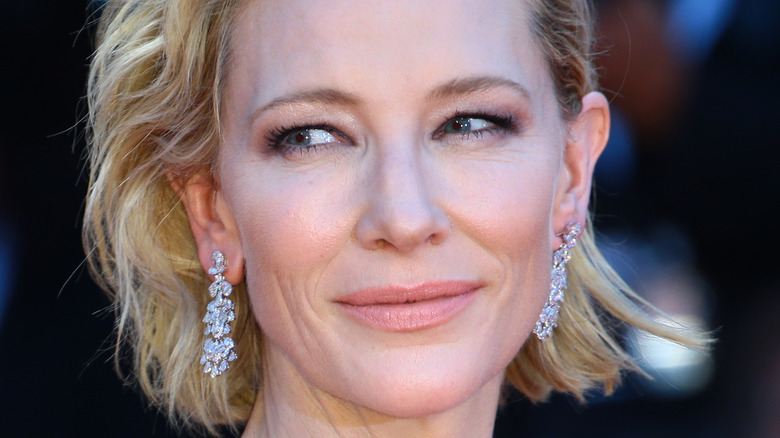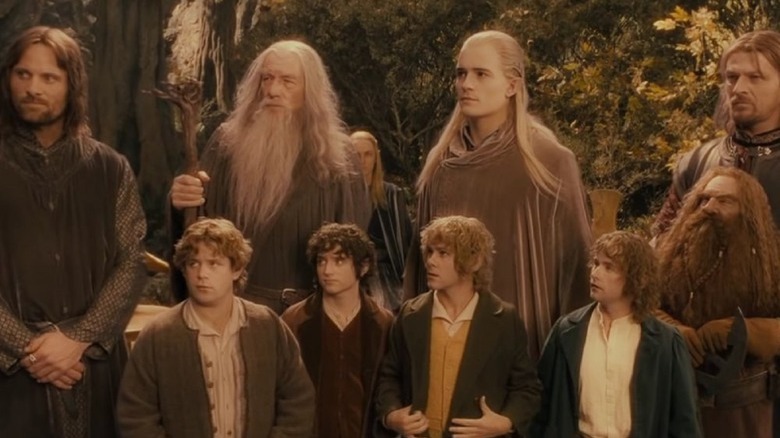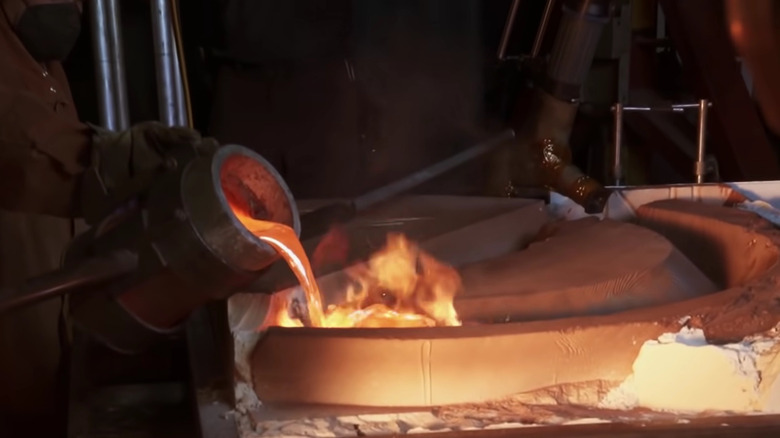The Impressive Lord Of The Rings' In-Camera Special Effects Blew Cate Blanchett's Mind
Peter Jackson's "The Lord of the Rings" trilogy is firmly entrenched as a legendary part of cinematic lore. The trio of films kicked off 21st-century Hollywood by shining a light on the hitherto hidden wonders of the fantasy world that had previously been reserved for book readers and superfans. The overwhelming popularity of the movies combined with their unheralded recognition by the Hollywood elite paved the way for "Game of Thrones," "The Witcher," "Wheel of Time," and countless other fantasy series to follow in their wake.
And that doesn't even take into account the incredible feat that simply went into making the Tolkien-based trilogy itself. From massive sets and uncounted extras to filming a three-part movie all at once, everything about Jackson's trifecta of films is larger than life — or smaller than life, depending on how you put it. The constant need to balance filming different-sized individuals in one scene after another — and the fact that the production team managed to pull it off so well — is nothing short of legendary.
It's a sentiment shared by more than audience and critics. The cast members themselves have spent the last 20 years endlessly praising the cinematic acrobatics that went into pulling off "The Lord of the Rings," especially in an era where CGI was largely untested and practical effects still played a primary role in the filming process. One of those cast members is Cate Blanchett, who played Galadriel in the films and recently highlighted the piece of cinematic wizardry that blew her mind when she saw it in action on set.
Cate Blanchett was blown away by split-frame diopter
In an interview on First We Feast's "Hot Ones," Cate Blanchett was asked by Sean Evans what camera trick she found particularly impressive to witness behind the scenes. The actor immediately went to a tried and true classic of "The Lord of the Rings" — size discrepancies. "I think it was what Peter Jackson was calling — and I'm sure they're being used a lot now — split-frame diopter," said Blanchett, adding that "It's something they do with the lens so you can hold two people of monumentally different sizes in the same frame."
Blanchett went on to compare the trick to a piece of theater, describing the way the film crew would build two versions of a set, like a table scene. Everything on one side would be big, while they would assemble the other side on a much smaller scale. With split diopter, actors are filmed in both the foreground and the background to maximize a disparity in size — or in Gimli actor John Rhys-Davies' case, take him from one of the largest actors on set to one of the smallest.
To do this, special lenses are used, enabling the camera to focus on multiple focal planes at once. It's a practical special effect that, in Blanchett's words, creates a fun-house mirror sort of effect. The Galadriel portrayer went on to praise the split diopter not just as a nifty way to make full-grown humans look like Hobbits, but also as a cool way to keep things in camera and very real rather than doing everything in post.
The Rings of Power is following Jackson's lead
It's interesting to note that Amazon Prime's "The Rings of Power" series deliberately made it a point to introduce practical effects to their film process in Season 1. Rather than going the way of the oft-criticized "Hobbit" films (which used and abused CGI to no end), the Second Age show is investing time and resources into filming many of its scenes in-camera. This includes countless interactions between the undersized Harfoot Nori and the oversized Istar Stranger as well as many Elf-Dwarf encounters, with a particularly difficult scene to film where an Elf and a Dwarf walk down a hallway side by side (via The Hollywood Reporter).
Everywhere you look, the serialized Middle-earth show isn't shying away from filming real scenes between dramatically different-sized characters. Its creators even went above and beyond to film its title reveal using very real practical effects, including molten metal and fog machines.
In many ways, "The Rings of Power" strives to match the magical qualities that brought Peter Jackson's films to life and made them major elements of modern life and culture. Some departments, such as the use of practical effects and stunning visuals, are certainly on par with the original movies (thanks, in part, to the tremendous evolution of filming capabilities in the past two decades). What remains to be seen is if the show can capture the same intangible storytelling enchantment across a planned five-season story that has brought fans back to Jackson's trio of films again and again over the years.


